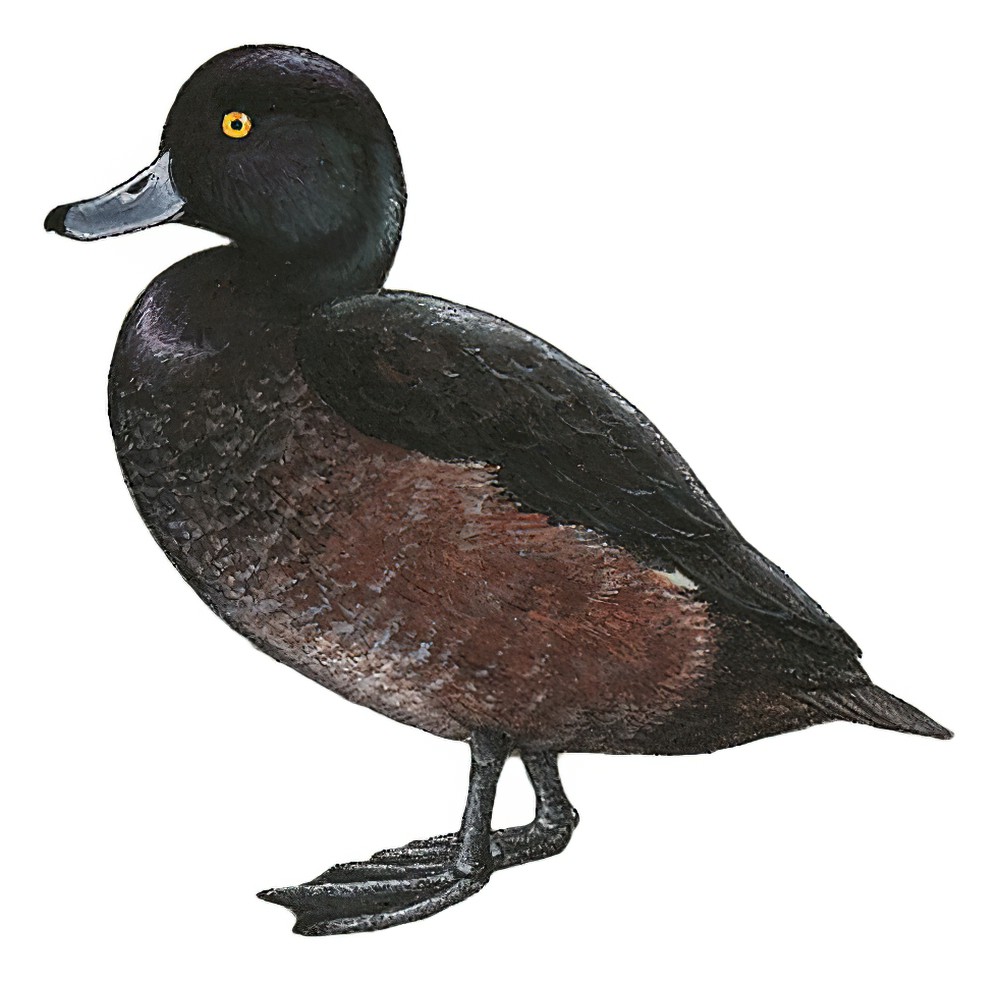New Zealand Scaup / Aythya novaeseelandiae

New Zealand Scaup
SCI Name:
Protonym: Anas novoe Seelandioe Syst.Nat. 1 pt2 p.541
Taxonomy: Anseriformes / Anatidae / Aythya
Taxonomy Code: nezsca1
Type Locality: New Zealand = Dusky Sound, South Island, New Zealand, fide G. Forster, 1777, Voyage World, 1, p. 168.
Author: Gmelin, JF
Publish Year: 1789
IUCN Status: Least Concern
DEFINITIONS
AYTHYA
(Anatidae; Ϯ Greater Scaup A. marila) Gr. αιθυια aithuia unidentified seabird mentioned by Aristotle, Hesychius, and other authors. In modern times associated with a variety of seabirds, including a shearwater, a cormorant, a duck, and an auk (cf. Gr. myth. Thyr or Thyrie, mother of Cygnus, who was changed into a waterbird); "130. Aythya marila. — Anas marila Lin." (Boie 1822); "Aythya Boie, 1822, (before May), Tagebuch Reise Norwegen, p. 351. Type, by monotypy, Anas marila Linnaeus." (Johnsgard in Peters, 1979, I, ed. 2, p. 482).
Var. Aethyia, Aethyja, Aithyia, Aithya.
Synon. Aristonetta, Dyseonetta, Fuligula, Fulix, Glaucium, Hydrobates, Ilyonetta, Marila, Nettarion, Nyroca, Penelope, Perissonetta, Zeafulix.
novaeseelandiae
L. novus new; Mod. L. Zeelandia or Seelandia Zeeland, Netherlands; i.e. New Zealand (also New Zeeland and New Zeland, which received its name from the explorer Abel Tasman who explored the west coast in 1642, naming it Nova Zeelanda after his Dutch home).
● ex “New-Zealand Lark” of Latham 1783 (Anthus).
● ex “New-Zealand Duck” of Latham 1785 (Aythya).
● Erroneous TL New Zealand (= Tahiti); ex “Red-rumped Parrot” of Latham 1781 (syn. Cyanoramphus zealandicus).
● ex “New-Zealand Falcon” of Latham 1781 (Falco).
● ex “New-Zealand Titmouse” of Latham 1783 (Finschia).
● ex “New Zealand Pigeon” of Latham 1783 (Hemiphaga).
● ex “New-Zeeland Owl” of Latham 1781 (Ninox).
● ex “New Zealand Creeper” of Brown 1776, and “Poë Bee-eater” of Latham 1782 (Prosthemadera).
UPPERCASE: current genus
Uppercase first letter: generic synonym
● and ● See: generic homonyms
lowercase: species and subspecies
●: early names, variants, mispellings
‡: extinct
†: type species
Gr.: ancient Greek
L.: Latin
<: derived from
syn: synonym of
/: separates historical and modern geographic names
ex: based on
TL: type locality
OD: original diagnosis (genus) or original description (species)












